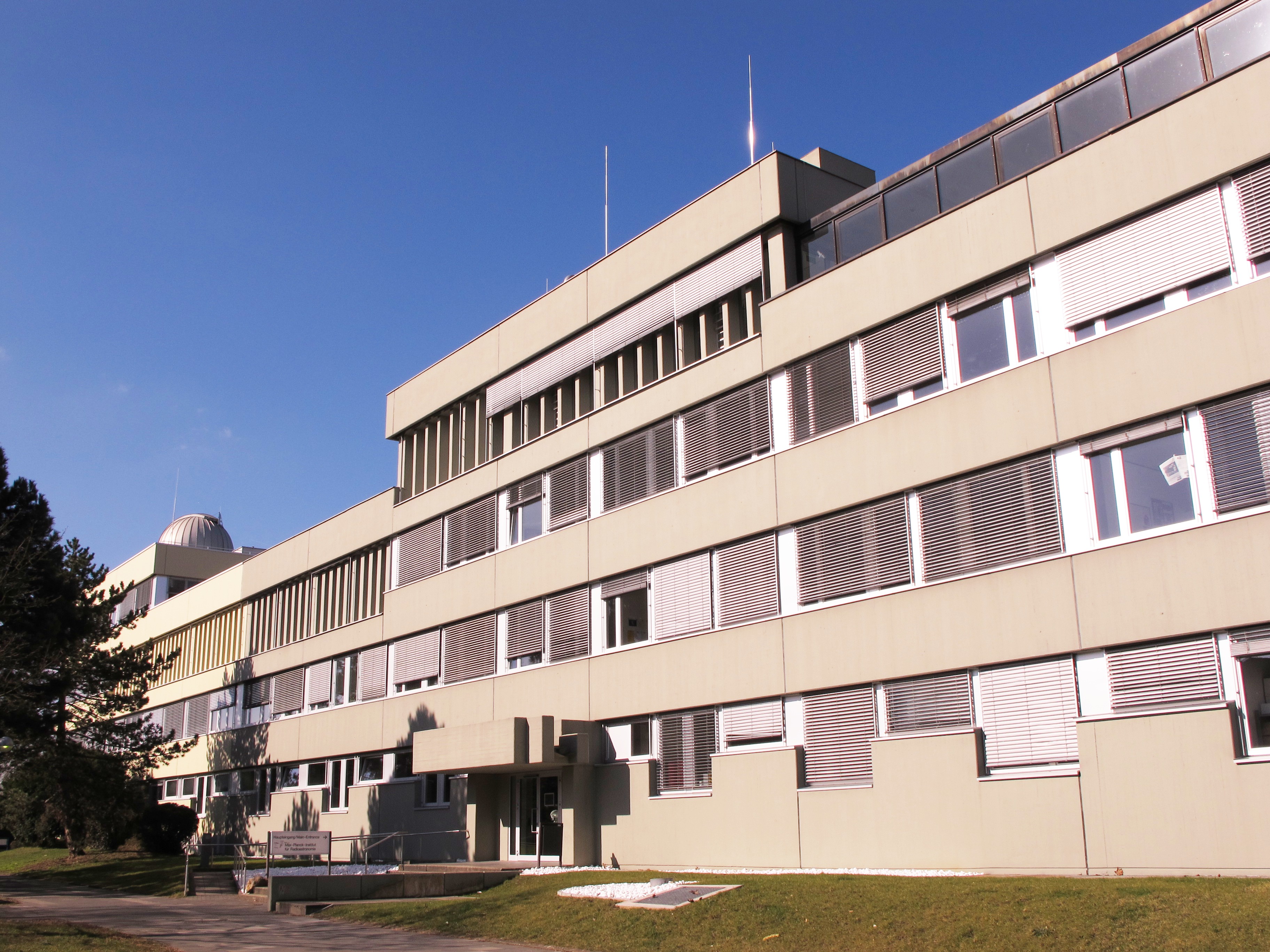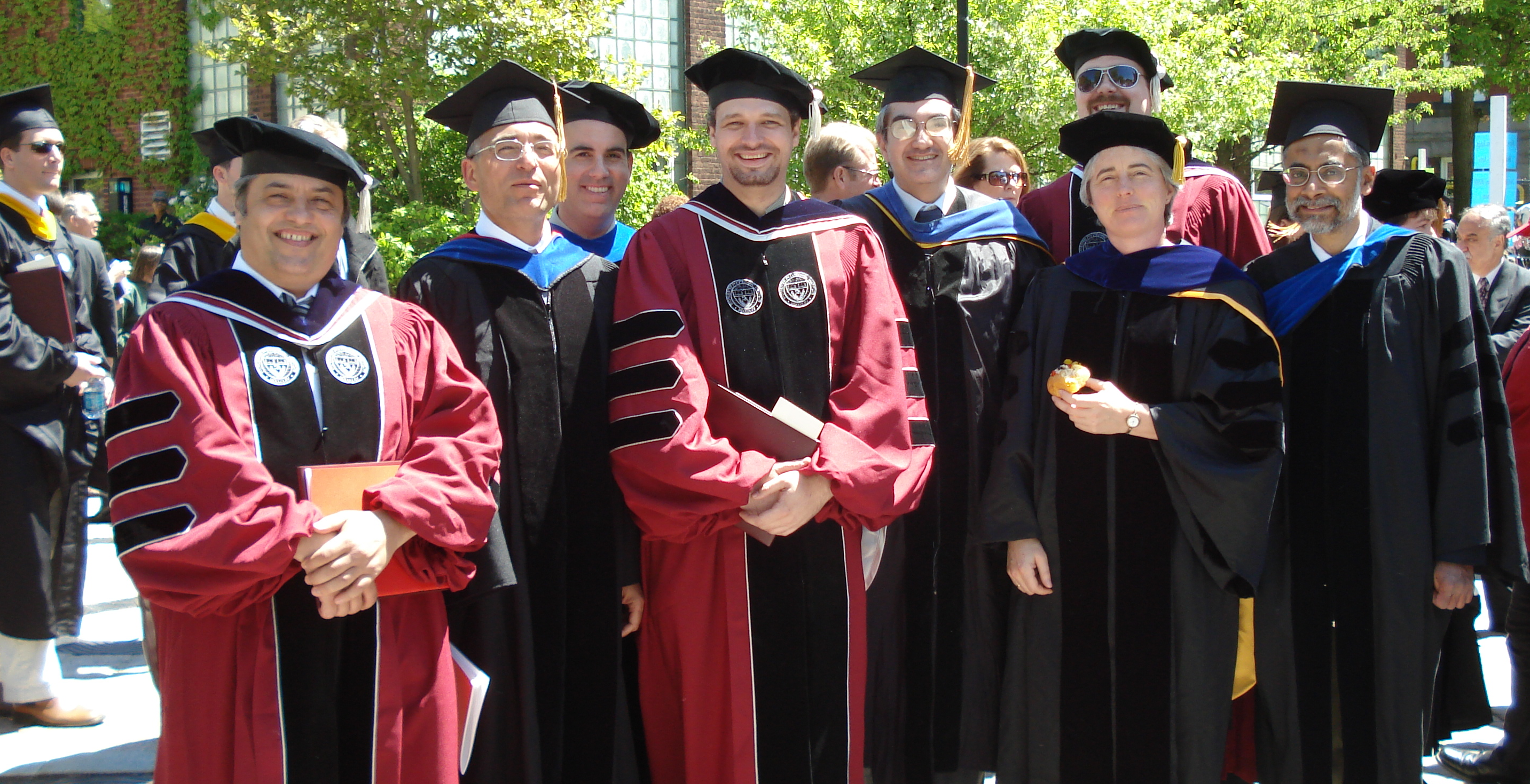|
Aleksander Wolszczan
Aleksander Wolszczan (born 29 April 1946) is a Polish astronomer. He is the co-discoverer of the first confirmed extrasolar planets and pulsar planets. He is a graduate of the Nicolaus Copernicus University in Toruń and works as a professor at the Pennsylvania State University. Wolszczan is a fellow of the Polish Academy of Sciences, the American Astronomical Society and the International Astronomical Union. He is also the recipient of numerous awards for his groundbreaking contributions in the field of astronomy including Prize of the Foundation for Polish Science, Beatrice M. Tinsley Prize and the Marian Smoluchowski Medal of the Polish Physical Society. Early life and education Wolszczan was born on 29 April 1946 in Szczecinek located in present-day West Pomeranian Voivodeship, Poland; in the 1950s his family moved to Szczecin. His father Jerzy Wolszczan taught economics at former Szczecin Polytechnic (currently West Pomeranian University of Technology) and his m ... [...More Info...] [...Related Items...] OR: [Wikipedia] [Google] [Baidu] |
Polish Academy Of Sciences
The Polish Academy of Sciences (, PAN) is a Polish state-sponsored institution of higher learning. Headquartered in Warsaw, it is responsible for spearheading the development of science across the country by a society of distinguished scholars and a network of research institutes. It was established in 1951, during the early period of the Polish People's Republic following World War II. History The Polish Academy of Sciences is a Polish state-sponsored institution of higher learning, headquartered in Warsaw, that was established by the merger of earlier science societies, including the Polish Academy of Learning (''Polska Akademia Umiejętności'', abbreviated ''PAU''), with its seat in Kraków, and the Warsaw Society of Friends of Learning (Science), which had been founded in the late 18th century. The Polish Academy of Sciences functions as a learned society acting through an elected assembly of leading scholars and research institutions. The Academy has also, operating throug ... [...More Info...] [...Related Items...] OR: [Wikipedia] [Google] [Baidu] |
Szczecinek
Szczecinek (; ) is a historic city in Middle Pomerania, northwestern Poland, capital of Szczecinek County in the West Pomeranian Voivodeship, with a population of more than 40,000 (2011). The town's total area is . The turbulent history of Szczecinek reaches back to the High Middle Ages, when the area was ruled by Pomeranian dukes and princes. The majority of the city's architecture survived World War II and, subsequently, its entire Old Town was proclaimed a national heritage monument of Poland. Szczecinek is the location of one of the oldest museums and one of the oldest high schools in Pomerania and northern Poland, and one of the places of production of ''krówki''. It is an important railroad junction, located along the main Poznań - Kołobrzeg line, which crosses less important lines to Chojnice and Słupsk. Location Szczecinek lies in eastern part of West Pomeranian Voivodeship. Historically, it was included within Western Pomerania. In 2010, the city boundaries were e ... [...More Info...] [...Related Items...] OR: [Wikipedia] [Google] [Baidu] |
Toruń
Toruń is a city on the Vistula River in north-central Poland and a World Heritage Sites of Poland, UNESCO World Heritage Site. Its population was 196,935 as of December 2021. Previously, it was the capital of the Toruń Voivodeship (1975–1998) and the Pomeranian Voivodeship (1919–1939), Pomeranian Voivodeship (1921–1945). Since 1999, Toruń has been a seat of the local government of the Kuyavian-Pomeranian Voivodeship and is one of its two capitals, together with Bydgoszcz. The cities and neighboring counties form the Bydgoszcz–Toruń twin city metropolitan area. Toruń is one of the oldest cities in Poland; it was first settled in the 8th century and in 1233 was expanded by the Teutonic Knights. For centuries it was home to people of diverse backgrounds and religions. From 1264 until 1411, Toruń was part of the Hanseatic League and by the 17th century a leading trading point, which greatly affected the city's architecture, ranging from Brick Gothic to Mannerism, Mann ... [...More Info...] [...Related Items...] OR: [Wikipedia] [Google] [Baidu] |
Max Planck Institute For Radio Astronomy
The Max Planck Institute for Radio Astronomy (MPIfRA) (German: ''Max-Planck-Institut für Radioastronomie'') is located in Bonn, Germany. It is one of 80 institutes in the Max Planck Society (German: Max-Planck-Gesellschaft). History By combining the already existing radio astronomy faculty of the University of Bonn led by Otto Hachenberg with the new Max Planck institute the Max Planck Institute for Radio Astronomy was formed. In 1972 the 100-m Effelsberg 100-m Radio Telescope, radio telescope in Effelsberg was opened. The institute building was enlarged in 1983 and 2002. The southern wing of the whole complex is occupied by the Argelander Institute of Astronomy of the University of Bonn. Structure The Institute has three main research groups, each with its own Director Departments * Fundamental Physics (Michael Kramer (astronomer), Michael Kramer) * VLBI and Radio Astronomy (Anton Zensus) * Millimetre Astronomy (Karl Martin Menten, Karl Menten) Independent Resea ... [...More Info...] [...Related Items...] OR: [Wikipedia] [Google] [Baidu] |
Bonn
Bonn () is a federal city in the German state of North Rhine-Westphalia, located on the banks of the Rhine. With a population exceeding 300,000, it lies about south-southeast of Cologne, in the southernmost part of the Rhine-Ruhr region. This metropolitan area, Germany's largest, is also the second largest in the European Union by GDP, with over 11 million residents. Bonn served as the capital of West Germany from 1949 until 1990 and was the seat of government for reunified Germany until 1999, when the government relocated to Berlin. The city holds historical significance as the birthplace of Germany's current constitution, the Basic Law. Founded in the 1st century BC as a settlement of the Ubii and later part of the Roman province Germania Inferior, Bonn is among Germany's oldest cities. It was the capital city of the Electorate of Cologne from 1597 to 1794 and served as the residence of the Archbishops and Prince-electors of Cologne. The period during which Bonn was ... [...More Info...] [...Related Items...] OR: [Wikipedia] [Google] [Baidu] |
Radio Astronomy
Radio astronomy is a subfield of astronomy that studies Astronomical object, celestial objects using radio waves. It started in 1933, when Karl Jansky at Bell Telephone Laboratories reported radiation coming from the Milky Way. Subsequent observations have identified a number of different sources of radio emission. These include stars and galaxy, galaxies, as well as entirely new classes of objects, such as Radio galaxy, radio galaxies, quasars, pulsars, and Astrophysical maser, masers. The discovery of the cosmic microwave background radiation, regarded as evidence for the Big Bang, Big Bang theory, was made through radio astronomy. Radio astronomy is conducted using large Antenna (radio), radio antennas referred to as ''radio telescopes'', that are either used alone, or with multiple linked telescopes utilizing the techniques of Astronomical interferometer, radio interferometry and aperture synthesis. The use of interferometry allows radio astronomy to achieve high angular resolu ... [...More Info...] [...Related Items...] OR: [Wikipedia] [Google] [Baidu] |
People's Republic Of Poland
The Polish People's Republic (1952–1989), formerly the Republic of Poland (1947–1952), and also often simply known as Poland, was a country in Central Europe that existed as the predecessor of the modern-day democratic Republic of Poland. With a population of approximately 37.9 million near the end of its existence, it was the second most-populous communist government, communist and Eastern Bloc country in Europe. It was also where the Warsaw Pact was founded. The largest city and capital was Warsaw, followed by the industrial city of Łódź and cultural city of Kraków. The country was bordered by the Baltic Sea to the north, the Soviet Union to the east, Czechoslovak Socialist Republic, Czechoslovakia to the south, and East Germany to the west. The Polish People's Republic was a unitary state with a Marxist–Leninist government established in the country after the Red Army's takeover of Polish territory from Occupation of Poland (1939–1945), German occupation in ... [...More Info...] [...Related Items...] OR: [Wikipedia] [Google] [Baidu] |
Doctor Of Philosophy
A Doctor of Philosophy (PhD, DPhil; or ) is a terminal degree that usually denotes the highest level of academic achievement in a given discipline and is awarded following a course of Postgraduate education, graduate study and original research. The name of the degree is most often abbreviated PhD (or, at times, as Ph.D. in North American English, North America), pronounced as three separate letters ( ). The University of Oxford uses the alternative abbreviation "DPhil". PhDs are awarded for programs across the whole breadth of academic fields. Since it is an earned research degree, those studying for a PhD are required to produce original research that expands the boundaries of knowledge, normally in the form of a Thesis, dissertation, and, in some cases, defend their work before a panel of other experts in the field. In many fields, the completion of a PhD is typically required for employment as a university professor, researcher, or scientist. Definition In the context o ... [...More Info...] [...Related Items...] OR: [Wikipedia] [Google] [Baidu] |
Master Of Science
A Master of Science (; abbreviated MS, M.S., MSc, M.Sc., SM, S.M., ScM or Sc.M.) is a master's degree. In contrast to the Master of Arts degree, the Master of Science degree is typically granted for studies in sciences, engineering and medicine and is usually for programs that are more focused on scientific and mathematical subjects; however, different universities have different conventions and may also offer the degree for fields typically considered within the humanities and social sciences. While it ultimately depends upon the specific program, earning a Master of Science degree typically includes writing a thesis. The Master of Science degree was introduced at the University of Michigan in 1858. One of the first recipients of the degree was De Volson Wood, who was conferred a Master of Science degree at the University of Michigan in 1859. Algeria Algeria follows the Bologna Process. Australia Australian universities commonly have coursework or research-based Master o ... [...More Info...] [...Related Items...] OR: [Wikipedia] [Google] [Baidu] |
Constellation
A constellation is an area on the celestial sphere in which a group of visible stars forms Asterism (astronomy), a perceived pattern or outline, typically representing an animal, mythological subject, or inanimate object. The first constellations were likely defined in prehistory. People used them to relate stories of their beliefs, experiences, creation myth, creation, and mythology. Different cultures and countries invented their own constellations, some of which lasted into the early 20th century before today's constellations were internationally recognized. The recognition of constellations has changed significantly over time. Many changed in size or shape. Some became popular, only to drop into obscurity. Some were limited to a single culture or nation. Naming constellations also helped astronomers and navigators identify stars more easily. Twelve (or thirteen) ancient constellations belong to the zodiac (straddling the ecliptic, which the Sun, Moon, and planets all traver ... [...More Info...] [...Related Items...] OR: [Wikipedia] [Google] [Baidu] |
Astronomy
Astronomy is a natural science that studies celestial objects and the phenomena that occur in the cosmos. It uses mathematics, physics, and chemistry in order to explain their origin and their overall evolution. Objects of interest include planets, natural satellite, moons, stars, nebulae, galaxy, galaxies, meteoroids, asteroids, and comets. Relevant phenomena include supernova explosions, gamma ray bursts, quasars, blazars, pulsars, and cosmic microwave background radiation. More generally, astronomy studies everything that originates beyond atmosphere of Earth, Earth's atmosphere. Cosmology is a branch of astronomy that studies the universe as a whole. Astronomy is one of the oldest natural sciences. The early civilizations in recorded history made methodical observations of the night sky. These include the Egyptian astronomy, Egyptians, Babylonian astronomy, Babylonians, Greek astronomy, Greeks, Indian astronomy, Indians, Chinese astronomy, Chinese, Maya civilization, M ... [...More Info...] [...Related Items...] OR: [Wikipedia] [Google] [Baidu] |






